
Willie wagtail Australian Geographic
Quick Facts The Willie Wagtail is the largest, and most well-known, of the Australian fantails. The plumage is black above with a white belly. The Willie Wagtail can be distinguished from other similar-sized black and white birds by its black throat and white eyebrows and whisker marks.

Willie Wagtail The Australian Museum
The Willie Wagtail is found throughout mainland Australia but is absent from Tasmania. It is also found in New Guinea, the Solomon Islands, the Bismarck Archipelago and the Moluccas. Habitat: Willie Wagtails are found in most open habitats, especially open forests and woodlands, tending to be absent from wet sclerophyll forests and rainforests.
.jpg)
BirdLife Melbourne Willie Wagtail
Aussie Animals January 12, 2023 Birds The Willie wagtail ( Rhipidura leucophrys) is a small but striking bird that is commonly found throughout Australia. With its distinctive black and white plumage, long tail, and energetic behavior, the Willie wagtail is a familiar sight to many Australians.
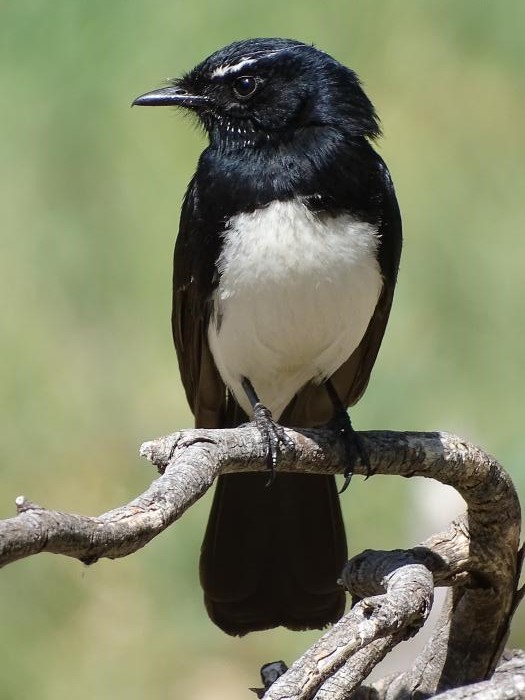
Willie wagtail New Zealand Birds Online
most of the Eastern and South-eastern mainland of Australia, but are not found in Northern Queensland. The Willie Wagtail lives almost any habitat except for very dense forests, and is commonly seen where people live. It is widely distributed in Australia and northern Tasmania.

Willie Wagtail Photos Photographs Pictures
The Willie Wagtail is found across mainland Australia, except for a small section of Western Australia's north-west. They are also not present at all currently on Tasmania. The Willie Wagtail prefers open space environments, from woodlands, plains, wetlands and metropolitan areas.

Willie Wagtail Beautiful birds, Wagtail, Australian birds
The willie wagtail is insectivorous and spends much time chasing prey in open habitat. Its common name is derived from its habit of wagging its tail horizontally when foraging on the ground. Aggressive and territorial, the willie wagtail will often harass much larger birds such as the laughing kookaburra and wedge-tailed eagle.
.jpg)
Willie Wagtail Canberra Birds
The Willie Wagtail is a small black and white songbird found throughout Australia. They are common in a variety of habitats, from forests to grasslands. They are most commonly seen near water, where they can be seen wagging their tails back and forth as they search for food.
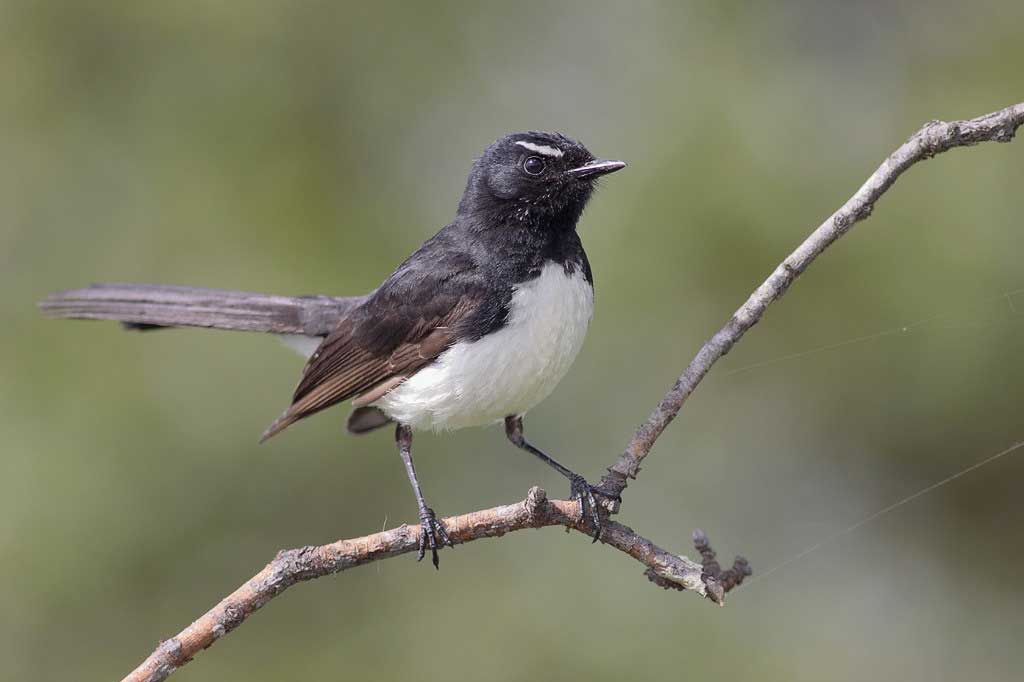
Willie Wagtail Profile Traits Facts Habitat Breeding Bird Baron
Willie wagtails are very widespread in Australia. Some parts of the population are migratory whilst others are sedentary. It is an occasional visitor to Tasmania, although it has bred. The willie wagtail is mainly a bird of open habitats, and has adapted very successfully to human-altered environments such as gardens, parks and golf-courses.
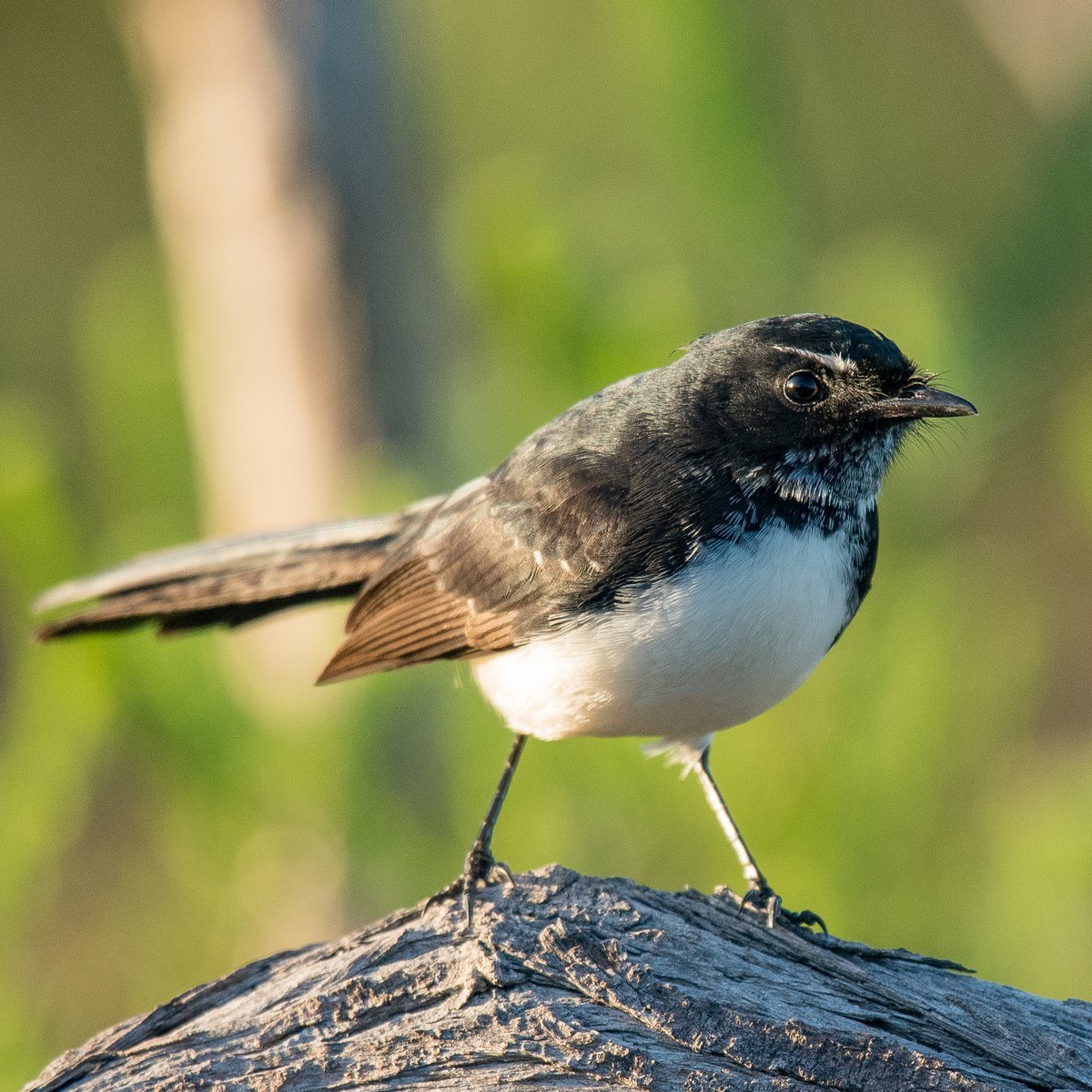
Willie wagtail UluruKata Tjuta National Park
Home Bird profiles Willie Wagtail Willie Wagtail Scientific name Rhipidura leucophrys Bird family fantails Status Least Concern (LC) Listen to audio Willie Wagtails are found in most open habitats, especially open forests and woodlands, tending to be absent from wet sclerophyll forests and rainforests.
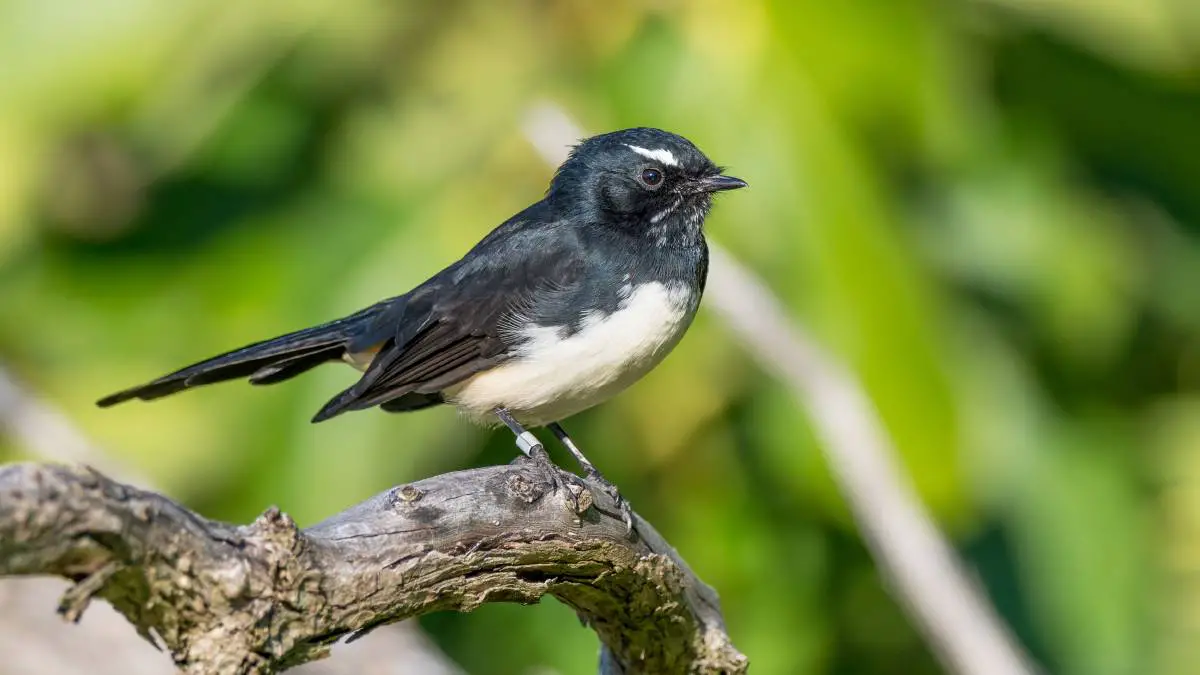
Everything you need to know about Willie Wagtails Australian Wildlife
Fast facts: Indigenous Australians believe the Willie Wagtail to be a gossiper who eavesdropped around the camps. In the Kimberley in Western Australia, legend has it that the birds would tell the spirit of the dead if anyone spoke badly of them.
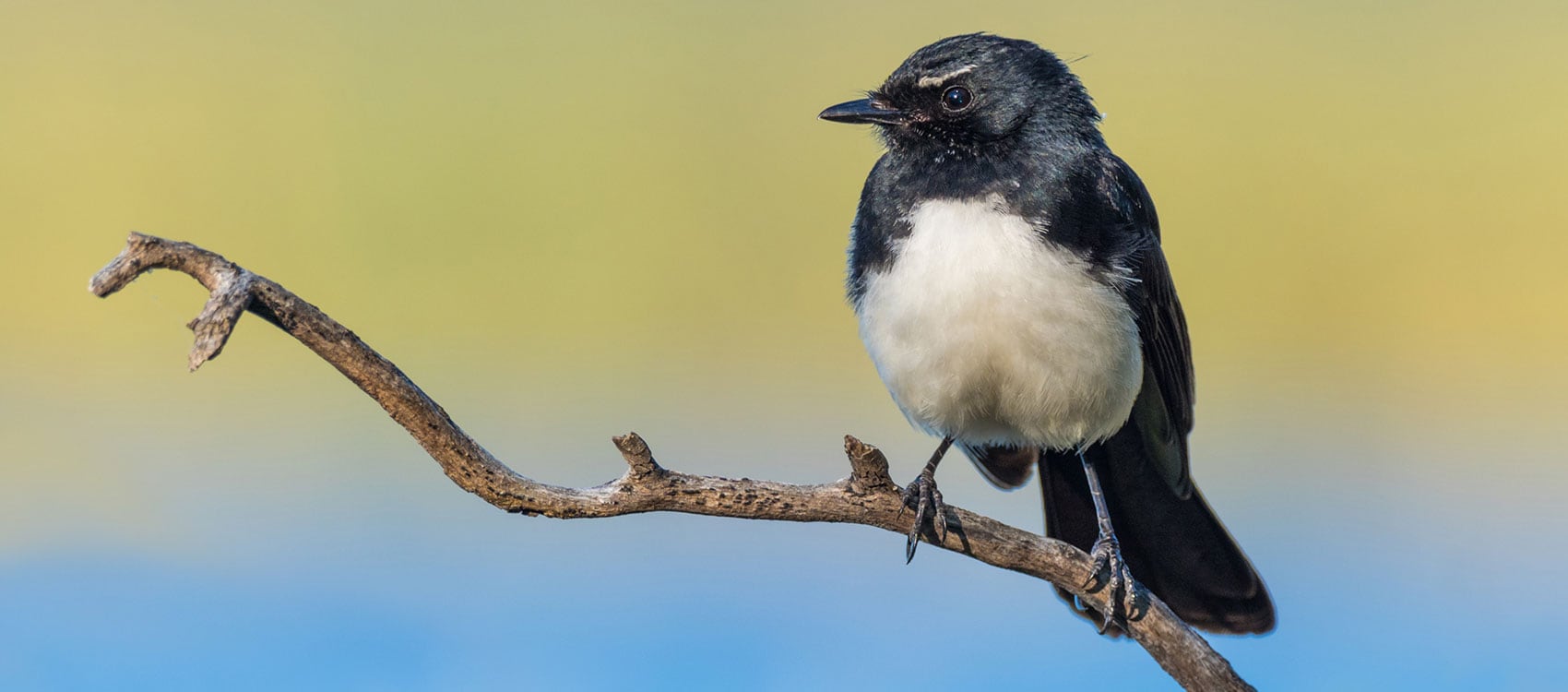
Visit Centennial Parklands Willie Wagtail Centennial Parklands
It's bright blue, sexually promiscuous and just 14cm long - and it's officially Australia's favourite bird.. Australian magpie 3.. Rainbow lorikeet 6. Tawny frogmouth 7. Willie wagtail 8.

Willy Wagtail BIRDS in BACKYARDS
17-24 g oz Length 19-21.5 cm inch The Willie (or willy) wagtail is the most familiar songbird found in Australia. It is common throughout much of its range, living in most habitats apart from thick forest. This bird spends much time chasing prey in open habitat.

Willie Wagtail (Image ID 27961)
Willie wagtail. Willie wagtail. Paul Balfe CC BY 2.0. At 20 cm long, the black-and-white willie wagtail is the largest Australian fantail. Willie wagtails are active feeders. They can be seen darting around on the ground as they hunt for insects, their tails wagging from side to side. Aggressive and territorial, willie wagtails often harass.
Willie Wagtail BirdForum
WEBSITE http://wildlifewalk.comSHOP http://goo.gl/NMBdWFIMAGES https://goo.gl/uu4Lf3FACEBOOK https://www.facebook.com/WildlifeWalk/TWITTER https://.

Willy wagtail JuzaPhoto
The nightingale is, as its name suggests, an infamous nocturnal singer known throughout Europe, Asia and North Africa. Its song signals the onset of springtime and, perhaps more importantly for the nightingale, the commencement of the mating season. Willie wagtails are easily recognisable by their white bellies, black bodies, wide white eyebrow.
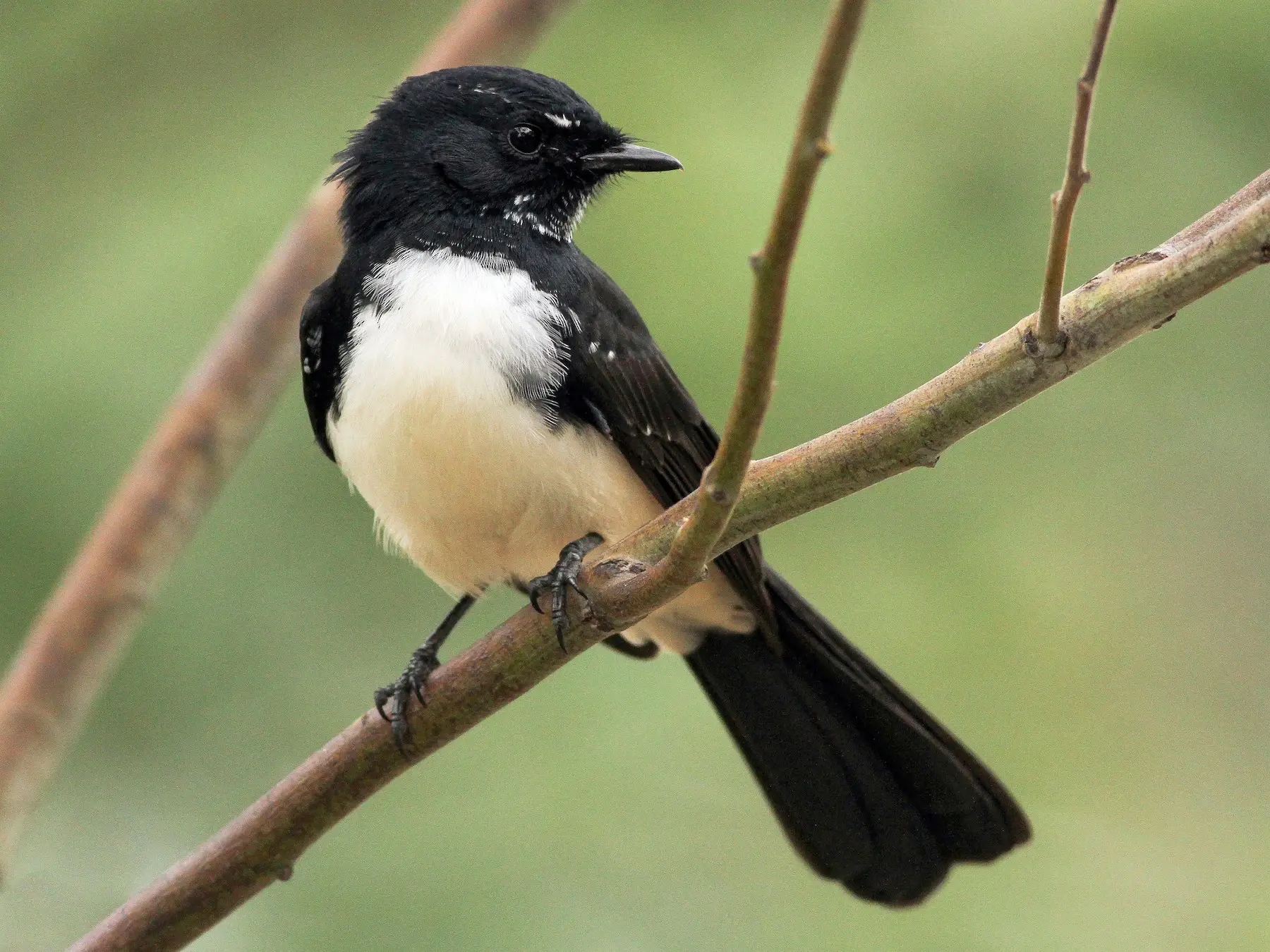
willie wagtail Australian Wildlife
The Willie Wagtail is often found in the company of cattle and sheep. They either run behind the moving animal snatching insects as they are disturbed, or sit on the animal's back, darting off to capture a flying insect and then returning to its mobile perch.
